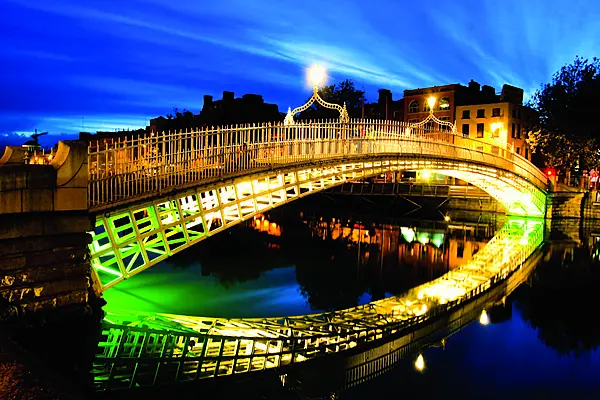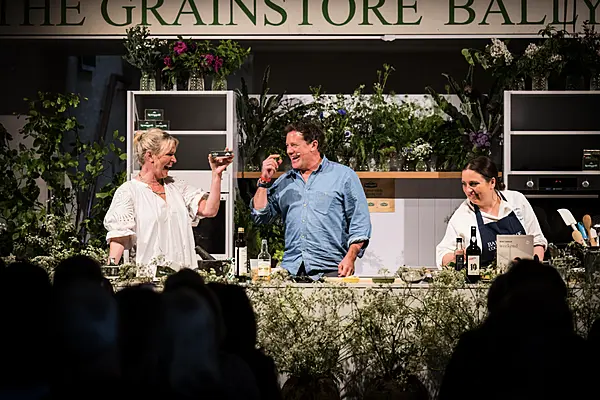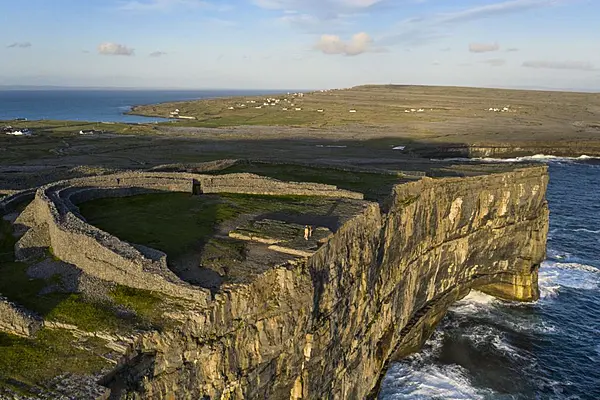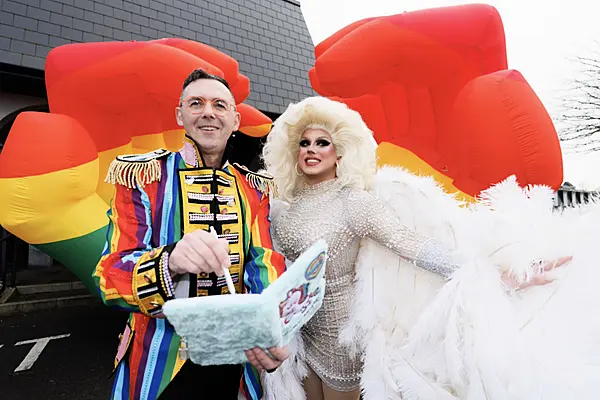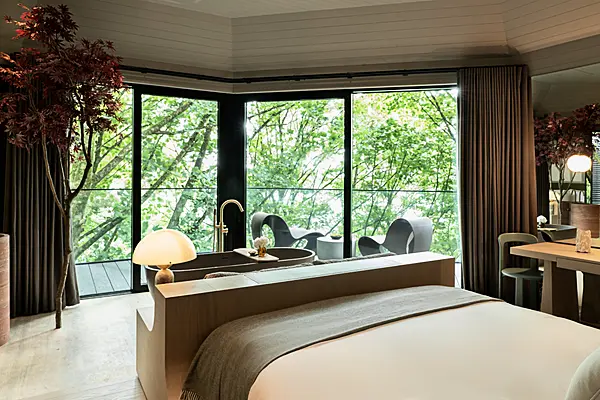Tourism numbers in Ireland are on the rise, with an additional 400,000 visitors expected to visit the Emerald Isle in 2015. We take a look at our tourism blueprint and ask, can it withstand the weight? Nina Kelly reports.
On top of our current peak, the Minister for Transport, Tourism and Sport, Paschal Donohoe, recently announced a new policy statement, People, Place and Policy – Growing Tourism to 2025, which has ambitious aims of targeting 10 million annual visitors to Ireland, spending €5 billion a year.
Meaty numbers for hungry businesses, but as those in the hospitality sector know, getting tourists to Ireland is only the first step. The second, and equally crucial, step will require genuine consideration from ground level up.
Businesses, hotels, B&Bs, restaurateurs, public services, roadworks, builders, the public transportation sector, heritage sites, parks, acting government bodies, airports and the tourism board all need to prepare for the much sought-after and forecasted spike in tourist traffic.
In order to keep tourists feeling satisfied on every possible level – both fundamentally and with longevity – the focus should be on the provision of adequate infrastructure. After all, hospitality is a choice.
There’s Work To Do
RTÉ reported the Irish Tourist Industry Confederation as saying, “Investment in transport, communications, air and sea ports is essential to the industry remaining competitive and maximising the potential for growth.”
RTÉ further highlighted the increase in volume, using Dublin’s Guinness Storehouse as an example. The attraction had a record-breaking 2014, with 1.3 million visitors coming through its doors.
It goes to show: if you build it, they will come.
Yet, alarmingly, The Irish Times reports that many more hotel rooms in Dublin are needed in order to keep up with rising tourist numbers, with the Dean Hotel in Dublin being the only new one to enter the market in two years.
Speaking to Hospitality Ireland, the chief executive of the ITIC, Eamonn McKeon, says, “We estimate that Dublin needs to add at least 5,000 hotel bedrooms by 2020 if potential growth levels are to be achieved. If you were to assume an average of 150 rooms per hotel – which is probably too high – that means about 35 new hotels. Some of these rooms will arrive by existing hotels adding capacity, of course.
“As the National Tourism Development Agency, it seems remiss of Fáilte Ireland not to have already commissioned an economic study as to the level of new capacity that is needed over the next ten years or so. It is daft having a target, as the government has, of 10 million overseas visitors to Ireland by 2025, without knowing where they will come from, or where they will sleep while here. It is even less sensible to be working on a plan, Destination Dublin, which suggests that Dublin could generate up to 2 million additional visitors by 2020.
“Where might they stay while visiting Dublin? By that, I mean staying in someplace near the centre, like even Ranelagh, Kilmainham, Smithfield – but not Tallaght, Bray or Drogheda.
“If I want to attend a conference in the Olympia Centre in London, I don’t wish to be staying in Waterford, or if I want to have a nice theatre weekend, I don’t want to be in Croydon, though both places are ‘handy enough’ to London,” McKeon continues.
“It could most certainly hinder our growth, and indications are that this is already beginning to occur. Large conferences and group traffic are finding it increasingly difficult to clear space in the capital for 2016 and
2017. The market will eventually deal with the issue and more accommodation will get built, but that takes time, and in the meantime – for the next two or three years – there certainly are bottlenecks.
“Also, scarcity of hotel rooms – in any location globally – drives prices, so there is a real danger that Dublin will, again, develop an expensive reputation, and were that to happen, there will be a spin-off negative association with value throughout Ireland.”
PWC Ireland reports, ‘In Dublin, no new hotels are expected to come on stream in 2015, however, several new hotel developments and extensions are in various stages of planning.’
Hotelier Martin Keane is well under way with his plans to turn Dublin’s Iveagh Market – and its surrounding properties – into the capital’s next thriving tourist hub.
His plans include a four-star hotel, apartments and houses for tourist rental, bars, restaurants, nightclubs, a distillery and a brewery.
Louisa McGrath from Dublin InQuirer even goes so far to suggest that this development could sweep the tourist title from beneath the feet of Temple Bar.
In regards to further infrastructure developments, McKeon is aware of “a rail link to Dublin Airport, a second runway at Dublin Airport, as over 80% of visitors that come here by air come through Dublin airport, an upgrade road from Cork to Tralee to bring Kerry within an hour of Cork Airport, and more rapid development of the Wild Atlantic Way”.
Future Projections
Speaking to Hospitality Ireland, Minister Paschal Donohoe says, “I think that despite the challenging fiscal situation, we have managed over the last few years to continue to invest in tourism capital projects, and not only deliver the 100 or so projects under the Tourism Capital Programme, but also substantially develop the Wild Atlantic Way, with a special additional budget allocation of €8 million in 2014.
“Work has commenced on Ireland’s Ancient East, and I await the outcome of the Grow Dublin Taskforce, regarding the framework for future investment in Dublin. In all, Fáilte Ireland will spend approximately €17.35 million on tourism infrastructure in 2015.
“Investment will be not just about capital, but also about festivals, animation and forms of experience development that get the most out of the facilities we have invested in to date.”
Minister Donohoe continues, “There has been considerable investment at our main airports, and the national motorway network now extends to some 1,200 kilometres. Significant investment in rail has also occurred.
“Bus transport also witnessed significant levels of investment, in particular, through fleet replacement and expansion programmes in Bus Éireann and Dublin Bus. Collectively, these investments have improved the experience of visitors to Ireland, and the ease with which visitors can travel within the country.
“The statement also recognises that a high-quality, reliable broadband service is essential for both providers of tourism products and services, and for visitors. Many areas of the country that currently experience shortfalls in accessing quality broadband provision are often places of considerable tourism potential.
“The National Broadband Plan, which is overseen by the Department of Communications, Energy and Natural Resources, aims to address any deficiencies in the service. Bringing forward an improved broadband service to places not adequately served by commercial providers will result in enhanced employment and investment opportunities in tourism, and improve the ability of existing tourism providers to trade online.”
Addressing the lack of hotel rooms with in the capital, Minister Donohoe adds, “As tourism continues to grow, particularly in Dublin, I am conscious of the need to develop more capacity in the right place and of the right kind. It is vital that we provide the services that the tourist wants. Capacity in the wrong place or of the wrong kind is simply a misallocation of resources – and we must ensure that whatever we do, we do not create conditions for such misallocation.
“Analysis of recent trends and future demand indicates that we will require additional capacity if we are to meet our ambitious targets for tourism in Ireland and especially Dublin. Given the kind of timelines, which major developments such as hotels require, we need to deliver additional capacity soon. I believe the steps the government is taking to strengthen the construction sector in Construction 2020 will help to deliver that capacity, as with other sectors, such as residential and office development.
“This year, with the development of the Wild Atlantic Way, Ireland’s Ancient East and the Grow Dublin Tourism Alliance, there are opportunities available for hotels and other businesses right across the country.”
Finishing, Minister Donohoe offers this advice to business owners: “While we recognise everyone’s entitlement to a fair return on investment and understand that businesses will seek to recover margins and generate income to fund maintenance and improvements, this government is constantly stressing that increasing returns must be done at an appropriate rate and in a way that visitors perceive as reasonable, for example, by adding value to the product.”
Tourist Talk
Any holidaymaker hopes to find value in his/her money. S/he hopes to explore the country with ease, have the amenities and attractions on offer exceed his/her expectations, and, ideally, return home more relaxed then when s/he came – perhaps even willing to visit again, and eager in encouraging others to do so.
Fáilte Ireland’s Visitor Attitudes Survey 2014 confirms some interesting facts.
It’s no surprise to learn that the Internet is the top informational source when choosing and planning a holiday to Ireland, with the top sites being DiscoverIreland.ie, generated content from sites, blogs or TripAdvisor, and Ireland.com. Top factors expressed when considering Ireland for a holiday were: a safe and secure destination, plenty of things to see and do, interesting history and culture, and suitability for touring.
‘Holidaymakers considered friendly, hospitable people the most important factor when choosing Ireland as a holiday destination. North Americans stand out above other markets on this measure.
‘Half agree that Ireland provides lots of opportunities to enjoy revitalising outdoor activities and experiences. The French visitor agrees somewhat less with this [perhaps showing space to expand].’
A recent online poll conducted by The Journal asked the public if they would recommend Ireland to tourists, and, interestingly, there was a noticeable consensus within the online public comments.
Chris Kirk writes, ‘In my experience, Ireland doesn’t do rights of passage. There are a few places in the countryside where walkers can roam freely without trespassing, but we need more green ways throughout the country along disused railway tracks – to open up the countryside to off-road walking and cycling.’
‘Jace Race’ agrees, writing, ‘I love the Irish countryside, but find there is very little opportunity to experience it unless you know someone who owns a farm. There is a lack of facilities, and there’s private farmland on mountaintops, right up to the shorelines of beaches, etc. The government does not do enough to make the country accessible.
‘Basic facilities like parking, toilets, etc. are virtually non-existent, and where they do exist, like at Glendalough, it’s difficult to access due to the crowds of people. There are rights of passage, of course, but not all tourists are going to feel comfortable with opening gates and wandering around private property.’
Considering Irish travel expert Bernd Biege from About Travel recently listed the top-ranking activities in Ireland as hiking and hillwalking, golf, angling, cycling, and equestrian sports, that’s some solid public feedback.
This makes proposed plans for a new tourist attraction in Cork (which would see the harbour open up to over 60 kilometres of recreational water trails for kayaking, canoeing, etc.) even more understandable.
Fáilte Ireland’s Visitor Attitudes Survey from 2014 points out, however, ‘One area of the environment that needs improvement is litter and pollution, as this has a lower overall score on satisfaction, at 77%, than all other measures on the environment.’
Further insights show the key advantages that distinguish Ireland from other holiday destinations. They are: the Irish people, the scenery, culture and history, pub culture, English-speaking, nature and ecology, interesting towns and villages, easy to get to, unspoilt environment, ancestral and family connections, and being restful and relaxing.
Some of the key disadvantages from the survey were: weather, cost of drinks, cost of food, high cost of living, driving difficulties, expensive souvenirs, exchange rates, poor signposting, bad roads/poor condition of roads, lack of food variety and poor quality, accommodation costs, all highlighting those stubborn areas.
As we are all already aware, Ireland is known globally for tourism.
The focus now should be on that second crucial step, and that’s putting Ireland on the economic map for what we’ve been able to do to capitalise on that tourism – with longevity and prosperity in mind.
Perhaps a high cost for an economy that is only recovering, but this is our time to shine, and we all should grab a cloth.
